#the birth of the modern indonesian recording industry
Explore tagged Tumblr posts
Video
youtube
Artist : Orkes Kelana Ria
Track : Semoga
Album : Padang Moonrise: The Birth of the Modern Indonesian Recording Industry (1955-69)
#music#orkes kelana ria#semoga#padang moonrise#the birth of the modern indonesian recording industry#1955-69
0 notes
Text
BoyBoy book club⭑.ᐟ
These books have either been mentioned or recommended by the boys, list made to the best of my memory, some notes added for context + little abstract. [(A.) = Aleksa's rec; (L.) = Lucas' rec; (Al.) = Alex's rec] Reply or reblog to add more to update the list thanks!
⊹ Caliban and the Witch: Women, the Body and Primitive Accumulation - Silvia Federici (A.) [Aleksa's commentary: Also 'Caliban and the Witch' by Silvia Federicci is brilliant. It's a great marxist-feminist retelling of the European witch-hunts, it's really really cool. It completely flipped my view of the birth of capitalism... She posits that capitalism is a reaction to a potential peasant revolution in Europe that never succeeded, and situates the witch-hunt as a tool of the capitalist class to break peasant social-ties and discipline women into their new role as reproducers of workers.] || Is a history of the body in the transition to capitalism. Moving from the peasant revolts of the late Middle Ages to the witch-hunts and the rise of mechanical philosophy, Federici investigates the capitalist rationalization of social reproduction. She shows how the battle against the rebel body and the conflict between body and mind are essential conditions for the development of labor power and self-ownership, two central principles of modern social organization.
⊹ The Age of Surveillance Capitalism - Shoshana Zuboff (A.) || This book looks at the development of digital companies like Google and Amazon, and suggests that their business models represent a new form of capitalist accumulation that she calls "surveillance capitalism". While industrial capitalism exploited and controlled nature with devastating consequences, surveillance capitalism exploits and controls human nature with a totalitarian order as the endpoint of the development.
⊹ Anti-Oedipus: Capitalism and Schizophrenia - Gilles Deleuze and Félix Guattari (L.) || In this book , Gilles Deleuze and Félix Guattari set forth the following theory: Western society's innate herd instinct has allowed the government, the media, and even the principles of economics to take advantage of each person's unwillingness to be cut off from the group. What's more, those who suffer from mental disorders may not be insane, but could be individuals in the purest sense, because they are by nature isolated from society.
⊹ Open Veins of Latin America - Eduardo Galeano (A.) (Intro to LATAM history, infuriating but good.) (Personal recommendation if you know nothing about LATAM.) || An analysis of the impact that European settlement, imperialism, and slavery have had in Latin America. In the book, Galeano analyzes the history of the Americas as a whole, from the time period of the European settlement of the New World to contemporary Latin America, describing the effects of European and later United States economic exploitation and political dominance over the region. Throughout the book, Galeano analyses notions of colonialism, imperialism, and the dependency theory.
⊹ The Origin of Capitalism - Ellen Wood (A.) || Book on history and political economy, specifically the history of capitalism, written from the perspective of political Marxism.
⊹ If We Burn - Vincent Bevins (L.) || The book concerns the wave of mass protests during the 2010s and examines the question of how the organization and tactics of such protests resulted in a "missing revolution," given that most of these movements appear to have failed in their goals, and even led to a "record of failures, setbacks, and cataclysms".
⊹ The Jakarta Method - Vincent Bevins (A.) [Aleksa’s recommendation for leftists friends] || It concerns U.S. government support for and complicity in anti-communist mass killings around the world and their aggregate consequences from the Cold War until the present era. The title is a reference to Indonesian mass killings of 1965–66, during which an estimated one million people were killed in an effort to destroy the political left and movements for government reform in the country.
⊹ The Anarchy: The Relentless Rise of the East India Company - William Dalrymple (L.) [Not read by the boys yet, but wanted to read.] || History book that recounts the rise of the East India Company in the second half of the 18th century, against the backdrop of a crumbling Mughal Empire and the rise of regional powers.
⊹ The Triumph of Evil: The Reality of the USA's Cold War Victory - Austin Murphy (A.) || Contrary to the USA false propaganda, this book documents the fact that the USA triumph in the Cold War has increased economic suffering and wars, which are shown to be endemic to the New World Order under USA capitalist domination.
⊹ Technofeudalism: What Killed Capitalism - Yanis Varoufakis (L.) || Big tech has replaced capitalism’s twin pillars—markets and profit—with its platforms and rents. With every click and scroll, we labor like serfs to increase its power. Welcome to technofeudalism . . .
⊹ The History of the Russian Revolution - Leon Trotsky (A.) [Aleksa's commentary: This might be misconstrued since I'm not a massive fan of Trotsky... but... his book "History of the russian revolution" is amazing. It's so unique to have such a detailed history book compiled by someone who was an active participant in the events, and he's surprisingly hilarious. Makes some great jokes in there and really captures the revolutionary spirit of the time.] || The History of the Russian Revolution offers an unparalleled account of one of the most pivotal and hotly debated events in world history. This book presents, from the perspective of one of its central actors, the profound liberating character of the early Russian Revolution.
⊹ Rise of The Red Engineers - Joel Andreas (A.) [Aleksa's commentary: It's a sick history book, focusing on a single university in China following it's history from imperial china, through the revolution and to the modern day. It documents sincere efforts to revolutionize the education system, but does it from a very detailed, on-the-ground view of how these cataclysmic changes effect individual students and teachers at this institution.] || In a fascinating account, author Joel Andreas chronicles how two mutually hostile groups—the poorly educated peasant revolutionaries who seized power in 1949 and China's old educated elite—coalesced to form a new dominant class.
⊹ Adults in the Room: My Battle with the European and American Deep Establishment - Yanis Varoufakis (A.) [Aleksa's commentary: The book I mentioned earlier - "adults in the room" - is amazing. There's a great description of Greece's role in the European economy [as an archetype for other, small European countries] and the Union's successful attempts to discipline smaller countries to keep their monetary policy in line with the interest of central European bankers. I'd definitely reccommend it!] || What happens when you take on the establishment? In Adults in the Room, the renowned economist and former finance minister of Greece Yanis Varoufakis gives the full, blistering account of his momentous clash with the mightiest economic and political forces on earth.
Edit: Links added when possible! If they stop working let me know or if you have a link for the ones missing.
#IDK if anyone else is interested in this but in case anyone finds it useful <3#boy boy#aleksa vulović#alex apollonov#ididathing#ngl most of this r aleksa/lucas recs.... idk if any of them are alex sorry i forgot?
94 notes
·
View notes
Photo

The skies are on fire, so soothe yourself with the calm, cool radio waves of Snackpoint Charlie. Music from around the world that perks you up and calms you down, 10pm to midnight June 7 on WGXC, 90.7 FM in the Hudson Valley, streaming live on WGXC.org, and podcast afterwards at https://wavefarm.org/wf/archive/mqg4hm
Snackpoint Charlie - Transmission 116 - 2023.06.07 PLAYLIST https://wavefarm.org/wf/archive/mqg4hm [ ^ click for download ^ ]
1) Elly Kasim - “Oh Tuhanku” from PERAK PERAK https://www.discogs.com/master/2442421-Elly-Kasim-Perak-Perak
2) The Scorpios - “Seven” from 23.6.17 https://www.cafeoto.co.uk/shop/scorpios-23-6-17/
3) Baba Commandant and the Mandingo Band - “Chasser Les Sachets” from SONBONBELA https://sublime-frequencies.bandcamp.com/album/baba-commandant-and-the-mandingo-band-sonbonbela
(underbed throughout:) Gordon Hempton - “Songs of Spring - Charity Version” from ONE SQUARE INCH OF SILENCE https://onesquareinch.org Pinchas Gurevich - “Potsclatterboogie” and “Dabellbottomstoll4u”
4) Adnan Othman & The Rhythmn Boys - “Doa Ku” from BERSHUKOR: A RETROSPECTIVE OF HITS BY A MALAYSIAN POP YEH YEH LEGEND https://sublime-frequencies.bandcamp.com/album/adnan-othman-bershukor-a-retrospective-of-malaysian-pop-yeh-yeh-legend
5) Asha Bhosle & Mohammed Rafi - “Main Hoon Pyar Tera” from TEESRI MANZIL https://www.discogs.com/master/921645-Rahul-Dev-Burman-Teesri-Manzil
6) Simon Junior & Maurice Patton and The Melodians - “Man Lee” from MAN LEE https://www.discogs.com/release/8665441-Simon-Junior-Maurice-Patton-The-Melodians-Man-Lee https://madrotter-treasure-hunt.blogspot.com/2023/02/simon-junior-maurice-patton-and.html
7) David Greenberger & The Huckleberries - “Music Appreciation” from UNIVERSAL PRESERVATION http://www.darrylvance.com/blog/2022/10/31/cover-art
8) Karim Shukry - “العودة إلى القاهرة (Take Me Back to Cairo)” from TAKE ME BACK TO CAIRO https://www.discogs.com/master/657603-Karim-Shukry-Take-Me-Back-To-Cairo
9) George Brassens - “La Messe au Pendu” from NOUVELLES CHANSONS https://www.discogs.com/master/233278-Georges-Brassens-Nouvelles-Chansons
10) Syd Barrett - “Dominoes” from BARRETT https://www.discogs.com/master/53459-Syd-Barrett-Barrett
11) Orkes Lokananta - “Nganggo Telek Nang Krikilan” from PADANG MOONRISE: THE BIRTH OF THE MODERN INDONESIAN RECORDING INDUSTRY (1955-69) https://soundwayrecords.bandcamp.com/album/padang-moonrise-the-birth-of-the-modern-indonesian-recording-industry-1955-69
12) Ersen - “Döne Sevdigim” from DÜNDEN BUGÜNE https://turkofongmbh.bandcamp.com/album/d-nden-bug-ne
13) Namian Sidibé - “Djougouya Mangni” from NAMIAN SIDIBÉ https://namiansidibe.bandcamp.com
14) 楊燕 (Yang Yan) - “沒有良心的人 (Heartless Person)” from 抛绣球 / 為什麼不愛我 (Throw Hydrangea / Why Don't You Love Me) https://www.discogs.com/release/5086347-%E6%A5%8A%E7%87%95-%E6%8A%9B%E7%BB%A3%E7%90%83-%E7%82%BA%E4%BB%80%E9%BA%BC%E4%B8%8D%E6%84%9B%E6%88%91
15) Ramuntcho Matta - “Avatar” from RAMUNTCHO MATTA https://wewantsounds.bandcamp.com/merch/ramuntcho-matta-s-t-deluxe-lp-edition-with-4-pp-booklet-and-2pp-insert
16) Allen Ravenstine - “Wall Flower (Agôn)” from WALL FLOWER EP https://music.apple.com/au/artist/allen-ravenstine/219787929
17) Maalem & Gat - “Chalaba” from SACRIFICE EP https://www.discogs.com/release/26726327-Various-Yonatan-Gat-Stone-Tapes
18) T. Chowdiah (7 String Violin) - “Tera Tiyaga Rada (Raga Gowli Pantu)” from TANJORE BEAUTY: CARNATIC INSTRUMENTALS FROM 78S https://branchdravidian.bandcamp.com
19) Guillermo Briseño - “Irreverencias (Texto e Improvisación para Siete Instrumentos de Teclado)” from AUSENCIAS E IRREVERENCIAS https://www.discogs.com/master/1613444-Guillermo-Brise%C3%B1o-Ausencias-E-Irreverencias
20) Ayako Shinozaki - “Stanza II” from MUSIC NOW FOR HARP https://wewantsounds.bandcamp.com/merch/ayako-shinozaki-music-now-for-harp-feat-takehisa-kosugi-deluxe-lp-edition-with-2p-insert-and-obi-black-vinyl
#notyourdadsworldmusic#snackpointcharliewgxc#snackpointcharlieradio#radioforopenears#hellsdonuthouse#communityradio#freeformradio#outernational#hudsonvalley#globalmusic#worldmusic#globalbeat#wgxcradio#hudsonny#wgxc
0 notes
Photo

“Arrack, arak, raki, arkhi. It is confusing. These are not all the same spirit, and people have been getting them mixed up for as long as international travel has brought them to the attention of international travelers. Arak and raki are middle-eastern grape-based spirits flavoured with anise. Arkhi, from Mongolia, on the other hand is distilled from koumis, fermented mare’s milk, that is frequently described as one of the least-pleasant beverages ever consumed for pleasure. And arrack was once a Hindi umbrella-term for all distilled spirits. One intrepid explorer wrote in 1825: “The natives call our gin English arrack.” But arrack is not all spirits.
Although its birth is lost in history, there is no doubt arrack is one of the world’s oldest distilled spirits. It predates Scotch and Irish whiskey. It predates gin and genever. After Marco Polo commented about it in his memoir Il Millione, it was brought to Russia by Genoese merchants a century before the Russians’ love of mead and beer was replaced with a taste for distilled spirits. In fact, it is the parent of vodka.”
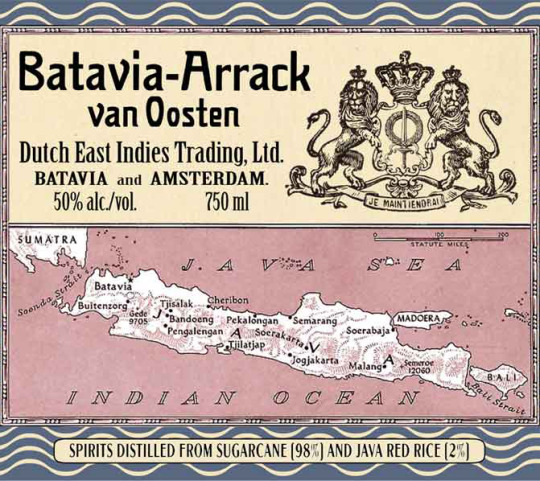
“Produced on the island of Java, Batavia arrack is distilled from molasses and water, using dried cakes of red rice and botanicals that contain yeast and other fungi spores that trigger the fermentation process. This technique can be traced back thousands of years to China and even predates the birth of distillation. The fermented molasses mixture is then distilled in traditional pot stills. The Dutch East India Company, in 1619, laid claim to Java and renamed the capital city Batavia. A name it would hold until the Japanese occupation, in 1942, when it was titled Djakarta.
So, why did such a popular spirit vanish? The first blow was taxation. By the early 1800s protectionist import taxes were levied against spirits imported from the east, giving an enormous advantage in Europe, then the world’s richest market, to Caribbean and American rum producers. The British East India Company went so far as to ban the transport of arrack on its ships except for consumption on board. Rum production grew exponentially, while arrack production gradually faded.”
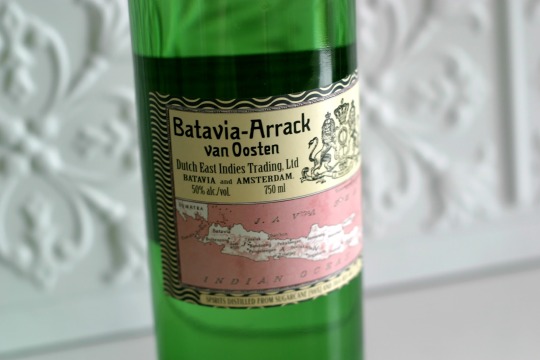
“During the Second World War, the Pacific theatre witnessed horrific battles, and most arrack production ceased. In some places, like in Goa, it disappeared completely. In Java, it nearly disappeared (exports were almost solely sold to China and Sweden), but has come streaming back onto the world market only in the last few years. Despite the external pressures, it is odd that arrack disappeared.
Now that arrack has once again emerged, it is important to understand the differences between the two primary styles (differences that make them less alike than vodka and gin, for example). Batavia Arrack is a heavy, funky uncle of dark rum. It is oily and unrefined, rich both in pleasant flavours and harsh impurities. Ceylon Arrack, by contrast, is a remarkably refined, soft and subtle spirit. It has hints of Cognac and rum character and a wealth of delicate floral notes, and would likely run screaming from a glass of its coarse Batavian namesake. (This style is not to be confused with Philippine Lambanog, which is distilled from coconut palm sap, but has more in common with moonshine and is rarely seen outside of the Philippines.)”
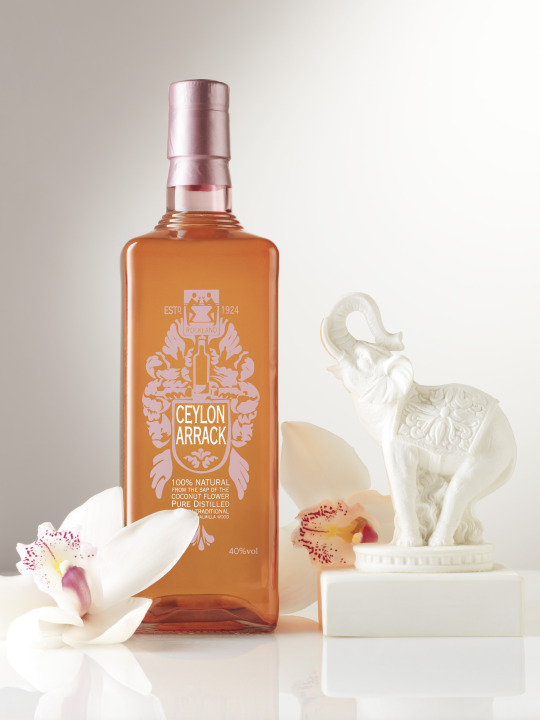
Rediscovering the World’s First Luxury Spirit: Batavia Arrack
“Batavia arrack is still sold, if not widely, and is even undergoing something of a renaissance in the English-speaking world, if only because after years of being completely unavailable it is now available. We know that Batavia arrack is made on the Indonesian island of Java from molasses and rice and that it’s shipped to the Netherlands, Indonesia’s former colonial ruler, where it’s aged and blended and bottled.”

“Making alcohol from grain is much more difficult than making it from fruit or sweet sap, because only sugar will ferment, and grain has no sugar. What it does have is starch, which can be converted to sugar with a little work. In Europe, the process people used to do that was malting: artificially sprouting the grain, which triggers enzymes that convert the starch to sugar, and then toasting it to kill the sprout before it can use up all that sugar in growing.
In China, however, they found a different way. Chinese distillers have brought grain to fermentation by incorporating a fermentation-starter, a cake of rice or wheat that has been allowed to mold under controlled conditions (certain molds produce the same enzymes that malting does). These cakes, qu or chu, also attract yeast, so they both turn the starches to sugar and start the sugar fermenting.”

“In 1596, the first Dutch scouting-trading expedition made it to the East Indies. When they explored Java, they found an island newly fallen to Muslim conquest, its traditional Hindu kingdoms all replaced by loose rule from Muslim-dominated trading towns along the north coast... The Dutch first made their base at Bantam, near the western end of the Island, a bustling trading port the size of Amsterdam with a large, new Chinese population (a “very subtle and industrious people,” as the Dutch report on the voyage put it).
The Fujianese were making “much aqua vitae of rice and Cocus [i.e., coconut-palm sap].” The mixture of raw materials was a known technique in Chinese distilling; indeed, in parts of China qu was mixed with grapes to start fermentation. This seems to be what was going on in Bantam: The Chinese were adapting their techniques to local materials, stretching out their traditional rice spirit with the cheap and abundant local palm wine.”

“There was nothing like it in Europe, where almost all the spirits had to be distilled with pungent botanicals—either juniper berries, aniseed, caraway, or mint, or some complex mix of medicinal herbs—just to hide the taste of the raw spirit. But the Chinese had been distilling for over a millennium and knew how to get a clean spirit, and a strong one: most of the European spirits were single-distilled, as was palm arrack, while the Chinese generally did a double distillation. Yet this spirit wasn’t fully Chinese, either: Palm wine wasn’t a Chinese ingredient, and it brought a sweet softness to the spirit that was very different from what the people back home in China looked for in their strong drink.”
(via Rediscovering the World’s First Luxury Spirit: Batavia Arrack | The Daily Beast)
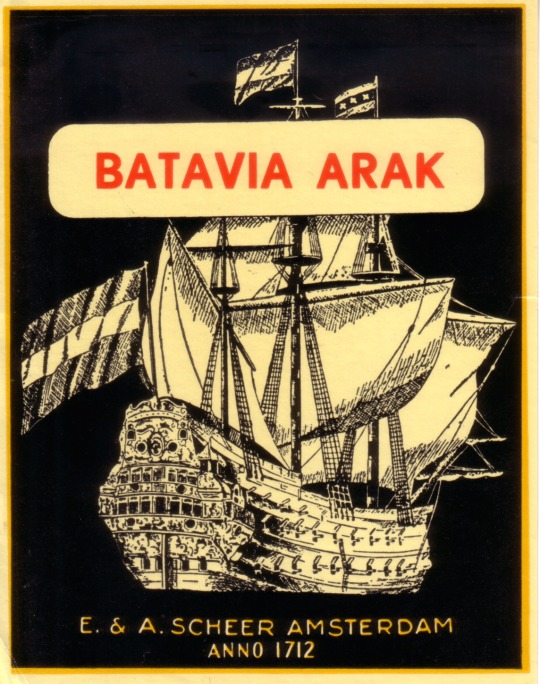
Arrack: The lost spirit of adventure
“Before sugar cane was planted in the Caribbean, before gin laid waste to London, even before the word “alcohol” was first used, people drank arrack.”
“Since the words “alcohol” and “liquor” would not be coined until two millennia after the drink was first recorded, the word “arrack” (along with its different spellings and accents) became a popular term for any alcoholic beverage. With India’s close influence on the Spice Road trade routes that fed the Persian, Mongolian and Ottoman Empires, arrack (both in word and product) travelled and traded alongside the silks and spices of the time. As such the drink and its name became associated with the empires of the east until eventually emerging onto European shores with the first East India merchantman of the 16th century.”
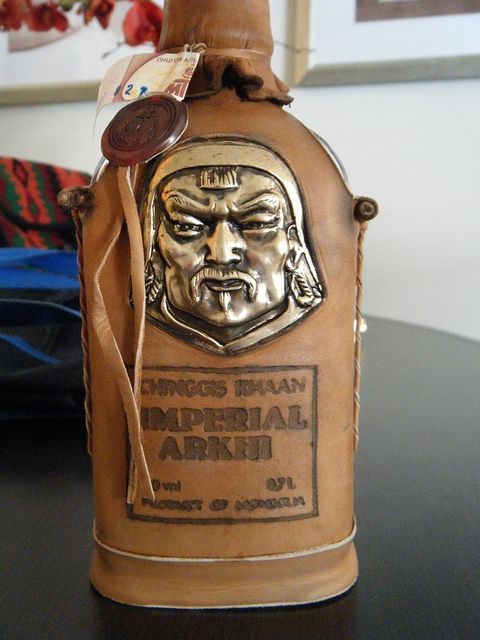
“A more unique style of arrack (aka arkhi, araku, arika or vina) is that of the Mongolians. Distilled from their national drink airag (aka koumiss – a traditional wine made from fermented mares milk) once distilled, the milk yields a mere one-tenth the alcohol of traditional fruit and grain spirits. Additionally since the milk has no vegetable ingredients, it is impossible for the fermentation to produce any methyl alcohol and so a single rough distillation is commonly enough.
With the huge sums of money made by the might of the English and Dutch East India trade companies it was only a matter of time before barrels of arrack arrived back into the home ports of London and Amsterdam. Under the additional influence of the new coffee house culture of the later 17th century, the common servings of ale and mead made way for more spirituous tipples such as genever, brandy and arrack. And the most popular way to enjoy them all – punch.”

“The etymology of the word “punch” further supports an East Indian origin with the Hindustani word for “five” written as paanstch...In 1644 an East India representative remembered only as Bennin, mentions an early punch named boulepongemade of “arrack, black sugar[molasses enriched sugar], juice of lemon, water, and a little muscadine [sweet wine]“. These same five base elements to which punch is defined (sweet, sour, strong, soft, spice) would ultimately help form the same base to which many of our modern cocktails apply – sugar, citrus, spirit, mixer and bitters. As for sailors, punch and arrack became as synonymous with their profession as wenches and scurvy.”
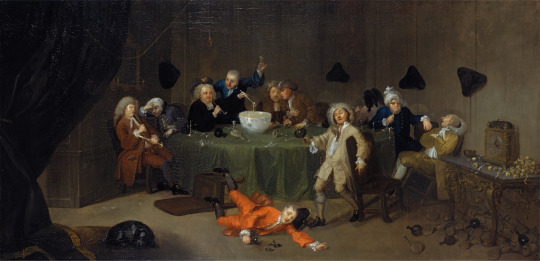
“By the early to mid 1700’s many an English coffee house became rebranded the punch house in line with the emerging popularity of the drink. One of London’s most popular venues was The London Coffee House and Punch House ...the worlds first cocktail book written by Jerry Thomas in 1862 (How to Mix Drinks or the Bon Vivants Companion), contained a large number of arrack recipes such as the aptly named Arrack Punch and popular Ruby Punch (click here for full recipe).
Since its earliest reference in Indo-Aryan Sanskrit at the start of the Iron Age, arrack is now over 3200 years old. Arrack has influenced the creation of the worlds first mixed drink while fueling the colonists and adventurers who helped develop much of the modern world.”
(via Arrack: The lost spirit of adventure | Drinking Cup blog)
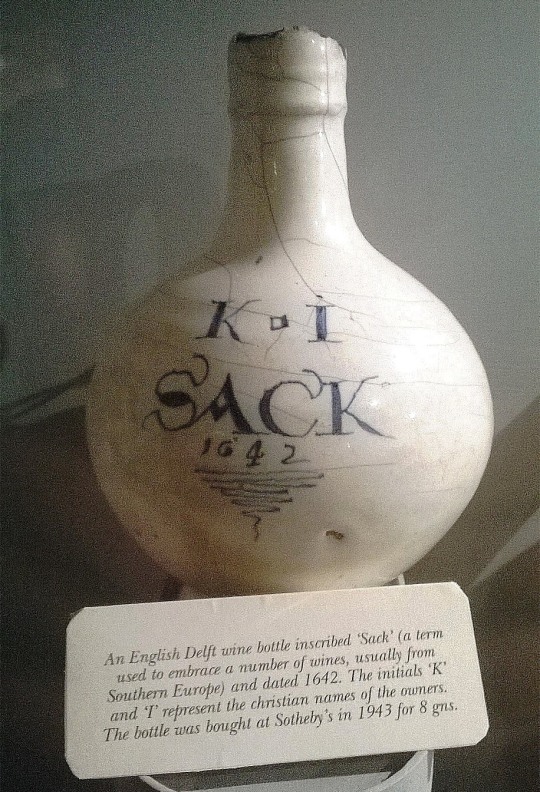
Kumis, the Traditional Drink of Gengis Khan and Attila the Hun
“Starting with kumis. This is a fermented dairy product, originally made from mare’s milk. Therefor a good example of the lifestyle of the ancient residents of the Asian steppes. These people were surrounded by horses since the day they were born, and as a figure of speech they rode them before they could walk. In the bare wide plains these tribes depended fully on their trusted animals. For transportation, fighting, clothing and food and drinks.Mare’s milk contains more sugar than sheep or goat milk, of which it’s cousin kefir is made.”
(via Kumis, the Traditional Drink of Gengis Khan and Attila the Hun | The Lord of the Drinks blog)

Kumiss - A discussion thereof.
“Occasionally, the Mongols distilled the airag to make a clear spirit called Arkhi with their homemade distillery. A bowl of airag is placed in the bottom of the metal barrel shape container, an empty bowl is fitted inside it towards the top of the barrel and a third bowl of cold water is placed at the top. All of this is placed on top of the stove, which is heated by dried animal dung. The airag is heated, evaporates and condenses on the bottom of the cold bowl and drops into the empty bowl. This can produce Arkhi up to 10-20% alc depending on the still.”
(via Kumiss - A discussion thereof. | Jolly Duke Tavern blog)
Arkhi made from kumis kefir in a Mongolian yurt
youtube
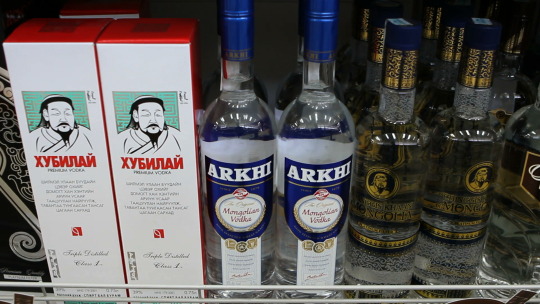
0 notes
Text
It’s Always about the People
In May 2017 the Boeing Corporation, legendary for the safety and performance of the aircraft it has produced since 1916, rolled out the latest update of its workhorse 737 passenger plane, the 737 MAX. Seventeen months later, in October 2018, an Indonesian Air flight crashed, killing everyone onboard that 737 MAX. Five months after that another 737 MAX, this one flown by Ethiopian Airlines, fell from the air, with the loss of all passengers and crew. A total of 346 people died in these 2 tragic events.
The Boeing 737 MAX is constructed from 367,000 parts, strung together with 10 million lines of computer code. It’s a wonder that any device this complicated can fly at all, let alone be entrusted with hundreds of lives, day after day, year after year. Nevertheless, the 737 MAX is a bone-chilling exception to the amazing safety record of modern aviation. The plane is still grounded, as investigators pour over everything from crash debris to corporate minutes.
Here’s an emerging picture of the 737 MAX disasters, as reported in the December 23 issue of Bloomberg Business Week. (The story is in Business Week because, needless to say, the loss in money is huge, about $5billion so far; in reputation, it’s incalculable.) “…the most fundamental breakdown at Boeing may have been a lack of appreciation of how humans respond under stress–both in the machine it was designing and in its own organization.” The pressure to make customer training a profit center and disputes with the pilots’ union over hiring outside contractors amped up the corporate chaos level as the new aircraft was being birthed. Moving flight simulators from Seattle, where the planes were designed and built, to Miami may have been Boeing’s biggest misstep. The company put a continent between the engineers who contrive the machine and the flight instructors who observe in their simulators (hopefully almost all) the things that can go wrong when human being meets silicon and aluminum, long before anybody is hurt.
… …better it should be your doctor!
No matter how spectacular the latest disasters, the airline industry does way, way better than the medical industry. A study published in the medical journal, BMJ, in 2016 estimated that 250,000 Americans die every year from medical error, making it the third leading cause of death, after heart disease and cancer. Some estimates place the number at over 400,000. Going with the lower estimate, a quarter-million deaths per year comes to about three 737 MAXes, fully loaded with passengers and crew, crashing every day!
If you think Boeing experienced a certain degree of corporate chaos that contributed to fatal outcomes, you ain’t seen nothing until you’ve stepped into the world of healthcare. Time after time the electronic systems that ought to foster communication and collaboration among the various people that literally hold people’s lives in their hands don’t even talk to each other. Even within institutions, systems are too often clumsy and make-work.
Need I tell you that communicating electronically with patients, all of which falls under the rubric of telehealth, is woefully inadequate? Just think about how many things you can accomplish easily and securely online with your bank or how it is finding and purchasing the airline tickets that best meet your travel needs, compared with how you communicate with your healthcare providers.
Every breakdown in communication increases the likelihood that sub-optimal, harmful or even fatal healthcare events will occur. If the oncologist (cancer doctor) isn’t informed about what the nephrologist (kidney doctor) is doing, the patient could receive a bigger dose of chemotherapy than their kidneys can handle. If an office-based nurse practitioner doesn’t know that a person was recently discharged from the hospital after hip surgery the clinician might not know to suspect a life-threatening blood clot in the lungs when the muddled patient calls because they’re anxious.
The technology ought to be the easy part. Internet protocols are standardized. Most of what needs to be done can be accomplished with inexpensive devices. Nearly everybody has a computer and/or a smartphone that can transmit and receive data, including voice (that’s what a plain old telephone does), images and video. It’s the people that are the hard part; that is, the people individually and as they gang up in institutions.
In order to maintain a market advantage, health system A doesn’t want health system B to get its hands on its proprietary patient data… and vice versa. One set of doctors uses Mac IOS, another uses Windows. Managers must decide either to support both operating systems, with added glitches and complications, or else risk disempowering and angering a large segment of their physician clients. In the interest of “upcoding” (increasing charges) the billing department has insisted that nurses and doctors use checklist templates to record all encounters with patients, detracting from the richness (stories) in the medical record, while alienating the people on the front lines, as well as adding an hour or two to their daily workload. The medical licensing board in one state insists that every out-of-state doctor who does a telemedicine consult on even a single one of its residents get a full medical license–a tedious, expensive and slow process–no matter that the out-of-state physician may be the best expert to care for that sort of patient or that there is a severe shortage of that specialty in the state.
In healthcare, training simulators are at least a half-century behind where they are in aviation. To be fair, it’s way easier to simulate a standard machine made of metal and silicon and such than it is an infinitely varied, non-standardized human body. Still, electronic technology could be a great boon for healthcare quality and safety. The lowest hanging fruits dangle from strong limbs of well-tested communication protocols and simple devices. The willingness and structures for collaboration are what’s missing. It’s killing us.
The post It’s Always about the People appeared first on Marc Ringel | Author & Healthcare Professional.
source https://marcringelmd.com/digital-healing/its-always-about-the-people/
0 notes
Text
Why Fish Is the Ultimate Superfood


Wild caught Alaskan Salmon
by Dr. Mercola Mercola.com
You've heard fish is good for you. Avid fishermen on the thousands of lakes and rivers across the U.S. enjoy catching fish for dinner. In the U.S., folks on both the Pacific and Atlantic coasts have found fish to be plentiful, delicious and a good source of protein.
But a new study shows that eating fish is better than first realized: It seems to be a factor that raises the odds of becoming pregnant, not only because couples who included fish on the menu had sex more often, but because they also conceived more quickly compared to people who had something else for dinner instead.
Scientists conducting the study, which was published in The Journal of Clinical Endocrinology & Metabolism,1 interviewed 501 couples who were actively endeavoring to become parents without involving medical intervention and followed them for a year or until they became pregnant, whichever came first.
Each couple kept a journal to record their health and behavioral habits, including what they ate - particularly their individual fish consumption - and the frequency of sexual intercourse. The study was controlled for things like smoking and alcohol intake, physical activity, the age of each individual, education level and other factors. The New York Times notes:
“They found that men who had two or more four-ounce servings of fish a week had a 47 percent shorter time to pregnancy, and women a 60 percent shorter time, than those who ate one or fewer servings a week.
Partners who ate fish also had sexual intercourse, on average, 22 percent more frequently, but the association of eating fish with pregnancy persisted even after controlling for frequency of lovemaking. By 12 months, 92 percent of couples who ate fish twice a week or more were pregnant, compared with 79 percent among those who ate less.”2
Mechanism Not Clear, but There Are Clues
Although lead study author, Audrey J. Gaskins, a research associate at Harvard, speculates that seafood might improve semen quality and egg release for ovulation, scientists can't really say exactly what the mechanism is for the improved pregnancy rates in regard to higher fish consumption.
She notes, however, that if eating fish has anything to do with bringing couples together, it's more of a behavioral pathway rather than a causal one. A reader commenting on the article suggested that it's the selenium that may have something to do with the “baby-making merit” of eating seafood, and cited a study published in International Journal of General Medicine, which observes:
“A significant development in the last 10 years in the study of human infertility has been the discovery that oxidative sperm DNA damage has a critical role in the etiology of poor semen quality and male infertility. Selenium (Se) is an essential element for normal testicular development, spermatogenesis, and spermatozoa motility and function.”3
Scientists in this study found that among 690 men suffering from idiopathic asthenoteratospermia (reduced sperm motility), who'd been given a combined supplement of 400 units of vitamin E and 200 μg of selenium daily for at least 100 days, 52.6 percent of the men (362 of them) had “significantly improved” sperm motility, morphology or both. There were also 75 cases of “spontaneous pregnancy.”
A case-controlled study in the U.K., published in the British Journal of Obstetrics and Gynecology,4 targeted the selenium status of women with a history of recurrent miscarriage and found evidence that selenium deficiency was also a factor when study participants who couldn't carry a pregnancy to term were compared to women who'd had little or no trouble becoming parents.
While the researchers found that the “difference was seen in hair samples but not serum samples and therefore may not represent a simple nutritional deficiency,” there was also a “significantly greater proportion of women in the control group who ate cereals, vitamin supplements and liver or kidney.”
That said, it's interesting to note that, according to Nutrition Data,5 while a 3.5-ounce (100-gram) piece of cooked beef liver contains 57 percent of the daily value or Reference Daily Intake (RDI) of selenium, the same amount of wild-caught Alaskan salmon provides 67 percent of the RDI in selenium.6
The Healthy Aspects of Eating Fish Versus the Toxic Effects of Mercury
Gaskins says he believes women have been “scared off fish” because of the growing threat of mercury poisoning and adds that there's low-level contamination in commonly eaten seafood such as shrimp and canned tuna. As healthy as it may have been to have fish on the menu at least twice a week 100 years ago, the growing problem of tainted waters has led to fish being contaminated by mercury and other pollutants.
But how does mercury get into the fish in the first place? Primarily, there are mercury “hot spots” where accumulation comes from chlorine production facilities, offshore oil-drilling platforms and coal-burning power plants.7 Scientific American notes that while mercury is a naturally occurring element found in plants, animals and elsewhere throughout the environment, human involvement in industrial endeavors for the last 150 years or so has “ratcheted up” the amount of airborne mercury.
It's not a negligible amount - it's substantial. Fish and many types of ocean life ingest the mercury - more specifically, methylmercury cysteine, the type found in seafood - until it finally reaches the humans who eat it. Live Science observes, “Mercury in humans may cause a wide range of conditions including neurological and chromosomal problems and birth defects.”8 Additionally:
“Once in the water, mercury makes its way into the food chain. Inorganic mercury and methylmercury are first consumed by phytoplankton, single-celled algae at the base of most aquatic food chains. Next, the phytoplankton are consumed by small animals such as zooplankton.
The methylmercury is assimilated and retained by the animals, while the inorganic mercury is shed from the animals as waste products … Small fish that eat the zooplankton are exposed to food-borne mercury that is predominantly in the methylated form. These fish are consumed by larger fish, and so on until it gets to humans.”9
An example of how insidious toxic mercury contamination is has to do with larger fish, such as tuna, swordfish, shark, large bluefish and grouper, having exponentially more mercury in them because they eat smaller fish, and the contamination is cumulative.
Mercury: How It Affects Pregnant Women and Developing Fetuses
Monterey Fish10 explains that the above ocean fish should be avoided, and includes King mackerel, barracuda, marlin, conger eel, jacks and Gulf of Mexico tilefish. Similarly, steer clear of certain wild freshwater fish, as well, including whitefish, pickerel, pike, walleye and lake trout due to potential mercury contamination. However, here's an interesting twist to the narrative.
In some cultures, fish is on the menu far more often than in the U.S., especially Japan, a relatively small nation entirely surrounded by water. In fact, it's consumed four to five times more there than in the U.S. The people have regularly consumed the largest tunas they could catch for centuries, so it's very likely they accumulated large amounts of methylmercury, apparently without causing problems. But there's more:
“A number of studies have found that the essential element selenium, high amounts of which are found in ocean fish, sequesters mercury, thus neutralizing its toxic effects. This may be the reason why studies have never shown an epidemic of child developmental problems in coastal populations whose diets have been comprised in large part of seafood.”11
Further, the omega-3 fatty acids in healthy seafood, namely fresh-caught Alaskan salmon, sardines, mackerel, herring and anchovies, are essential for your overall health. If you do not eat fish for whatever reason, I recommend that you take a quality supplement to supply it.
My best recommendation is krill oil, which is animal based and contains the highly crucial EPA and DHA omega-3s your body needs. EPA and DHA are important for your heart and brain, cellular and mitochondrial function, bone health and mood regulation, as well as for healthy fetal development and pregnancy.
On the other hand, methylmercury poses the greatest threat to the nervous system while unborn babies and newborns are developing - their brains, immune and nervous systems and retinas, in particular. It easily penetrates the placenta, where the mercury concentration in red blood cells may be 30 percent higher than in those of the baby's mother.
More Caveats Regarding Fish Consumption
A Timeline of U.S. and World Aquaculture12 indicates that the multimillion-dollar fish farming industry began, no doubt, with the very best intentions (like feeding people), but as with arguably every other global enterprise, problems occur (and continue to occur) that are as varied and unpredictable as your average fishing expedition. Some highlights:
Carp were farmed in China in rice paddies and freshwater ponds as early as 3500 B.C. Egyptian hieroglyphics show tilapia being rounded up into aquacultures, with Japan joining the ranks in 2000 B.C.
The first real fish farming as we know it may date to the 1400s, when Indonesians trapped young milkfish in coastal ponds when the tide was high. True modern-day methods may be traced back to a German farmer who gathered trout eggs, fertilized them, then nurtured the hatched fish to maturity.
Then in 1853, a trout farm in Ohio became the first official fish farm in the U.S., as it was the first to artificially fertilize its fish eggs. The concept grew to similar endeavors in New England in the late 1800s to raise lobsters and flounder, and Idaho for trout in 1909.
Franklin D. Roosevelt even had a farm pond program in which the concept was encouraged and federal subsidies offered for farms willing to build and stock fishponds. Similar operations began in the Caribbean, South America, the Mediterranean, Norway and Scotland by the 1960s and, by 1985, Australia.
No one could have predicted some of the problems: Sea lice caused the collapse of an Irish Sea trout fishery; Alaska banned netpen fish farms, shrimp farms collapsed worldwide due to disease; British Columbia placed a moratorium on new salmon farms to conduct an environmental review; and Canadian researchers procured a patent for transgenic (aka genetically engineered or GE) salmon. And that was just in the 1990s.
Can It Get Worse? The Trouble With Fish Today
Since then, setbacks have varied: Farmed salmon production exceeded the amount of wild-caught salmon in 1999; nearly 3 million Atlantic salmon reportedly escaped from farms in British Columbia, Washington, Maine and Scotland in 2001, the same year infectious salmon anemia forced Maine salmon farmers to slaughter over 1 million fish.
From the traces of illegal antibiotics found in an Asian shrimp farm in 2002 to the gross violations of the Clean Water Act13 in a Maine-based salmon farm in 2003, and certainly the toxicology tests revealing farmed salmon to be one of the most toxic foods in the world - more than five times more toxic than any other food tested14 - clearly the industry as a whole has some 'splaining to do.
The guidelines for clean-eating seafood are the same for everyone as they are outlined for pregnant moms: Fresh-caught Alaskan salmon, sardines, mackerel, herring and anchovies are your best bets in regard to healthiest seafood. Some people might think farmed fish must be the healthiest and most environmentally responsible choice, but in many respects, fish farming, aka aquacultured fisheries, aren't much different from the land-loving CAFOs - concentrated animal feeding operations.
One of the worst problems is salmon pens placed next to wild salmon runs, which seriously threatens the viability of wild-caught salmon, especially since the farmed variety are often carrying diseases such as infectious salmon anemia virus, and that's just one of several.
Deemed 'Toxic,' but Still Added to Farmed Fish Food
Science reported that a worldwide assessment of the threat to the salmon market as a whole can be answered by the 13 persistent organic pollutants, including PCBs (polychlorinated biphenyls), known as one of the most toxic and environmentally persistent chemicals ever created.
The Environmental Protection Agency (EPA)15 notes that PCBs (and there are dozens of trade names for them) don't break down, can remain for long periods cycling between air, water and soil, travel long distances and can be taken up into the bodies of small organisms and fish.
“Studies in humans support evidence for potential carcinogenic and noncarcinogenic effects of PCBs,” it notes, but the list of potential health problems for humans and animals is frankly staggering. Sure, industries are now being regulated to more stringent laws, but once it's out there, trying to take it back is no longer possible. The EPA site details a list of life-altering and hair-raising consequences PCBs can cause or impact:
Cancer
Reproductive system
Endocrine system
Immune system
Nervous system
Neurological effects
Keep in mind that PCBs are only one of many pollutants associated with farmed fish. One of the most treacherous is ethoxyquin, a chemical developed by Monsanto in the 1950s as a synthetic tire chemical. Ethoxyquin is found only in farmed salmon - not in wild.
It's used as a rubber stabilizer, pesticide, preservative and antioxidant all in one, and is a suspected carcinogen that “caused chromosomal aberrations, holes and fractures in chromosomes” of human cells and “was chemically toxic, destroyed chromosomes and DNA,” according to a Norwegian newspaper review.16
Because it prevents fat oxidation, it's used in some animal feeds,17 including fish food. According to Nutraceutical Business Review, the European Food Safety Authority's description of the chemical was pretty clear: Ethoxyquin is “considered to be toxic to aquatic organisms based on the acute toxicity data provided for fish, daphnia and algae.”18
Should You Eat Fish?
People have been eating fish since the dawn of man. It's been a staple for humankind in every area where fish can swim and has without a doubt been one of the foods that has kept humans alive, but in many more ways than offering mere sustenance. It's a lean protein, with vitamins, minerals, fatty acids and numerous compounds that can stave off high blood pressure, macular degeneration, depression, osteoporosis and diabetes.
Another new study in the journal Circulation reveals that people who eat two or more servings of oily fish per week had a “significantly lower risk of heart attack and stroke,” even in individuals who don't make “eating healthy” a priority. The study authors wrote:
“We conclude that one to two seafood meals per week be included to reduce the risk of congestive heart failure, coronary heart disease, ischemic stroke, and sudden cardiac death, especially when seafood replaces the intake of less healthy foods.”19
One of the most glowing reviews of fish as a healthy food was in light, again, of the high levels of omega-3s, with a notation that they're one reason the Mediterranean diet has been all the rage over recent years. Omega-3s enter your cell membranes, which is important for cell signaling and essential for an optimally functioning heart. Forbes noted a number of other perks:
“Research has focused largely on the anti-inflammatory influence of omega-3s, which counters the hardening and narrowing of arteries that characterizes heart disease. Diets higher in omega-3s are also linked to lower triglyceride levels and fewer fatty deposits that clog arteries …
But don't think a Friday night plate of fried catfish and slaw will fill the need. Eating fried seafood doesn't provide the same benefits, and likely contributes to the very problem eating non-fried fish helps improve. The results of one study suggested that people who ate fried fish at least once a week were nearly 50 percent more likely to develop heart failure than those who rarely ate fried seafood.”20
So should you eat fish? Again, pregnant moms and young children - and really, everyone - should steer clear of high-mercury seafood, but if you choose the healthiest options, the benefits are worth the risk for most people.
As a general rule, your best choices are small, cold-water, fatty fish, which are an ideal source of omega-3s with a low risk of contamination. The healthiest fish I suggest you consider eating more often include anchovies, sardines, mackerel, herring and wild-caught Alaskan salmon - step away from farmed varieties, both for your health and for the environment.
Read the full Article at Mercola.com
References
1 The Journal of Clinical Endocrinology & Metabolism, May 23,2018
2 The New York Times May 23, 2018
3 Int J Gen Med. 2011; 4: 99–104
4 BJOG 2001 Oct;108(10):1094-7
5 Nutrition Data 2018: Beef, variety meats and by-products, liver, cooked, braised
6 Nutrition Data 2018: Fish, salmon, Atlantic, wild, cooked, dry heat Nutrition Facts & Calories
7, 10, 11 Monterey Fish 2011-2018
8, 9 Live Science February 24, 2016
12 Alabama A&M & Auburn Universities 1997 – 2018
13 EPA August 8, 2017
14 File Oh! Fish
15 EPA April 13, 2018
16 Morgenbladet April 5, 2018
17 Dog Food Advisor 2018
18 Nutraceutical Business Review June 20, 2014
19 Circulation May 17, 2018
20 Forbes May 20, 2018
<!--//<![CDATA[ var m3_u = (location.protocol=='https:'?'https://network.sophiamedia.com/openx/www/delivery/ajs.php':'http://network.sophiamedia.com/openx/www/delivery/ajs.php'); var m3_r = Math.floor(Math.random()*99999999999); if (!document.MAX_used) document.MAX_used = ','; document.write ("<scr"+"ipt type='text/javascript' src='"+m3_u); document.write ("?zoneid=3&target=_blank"); document.write ('&cb=' + m3_r); if (document.MAX_used != ',') document.write ("&exclude=" + document.MAX_used); document.write (document.charset ? '&charset='+document.charset : (document.characterSet ? '&charset='+document.characterSet : '')); document.write ("&loc=" + escape(window.location)); if (document.referrer) document.write ("&referer=" + escape(document.referrer)); if (document.context) document.write ("&context=" + escape(document.context)); if (document.mmm_fo) document.write ("&mmm_fo=1"); document.write ("'><\/scr"+"ipt>"); //]]>-->

0 notes
Text
Why Fish Is the Ultimate Superfood
By Dr. Mercola
You’ve heard fish is good for you. Avid fishermen on the thousands of lakes and rivers across the U.S. enjoy catching fish for dinner. In the U.S., folks on both the Pacific and Atlantic coasts have found fish to be plentiful, delicious and a good source of protein.
But a new study shows that eating fish is better than first realized: It seems to be a factor that raises the odds of becoming pregnant, not only because couples who included fish on the menu had sex more often, but because they also conceived more quickly compared to people who had something else for dinner instead.
Scientists conducting the study, which was published in The Journal of Clinical Endocrinology & Metabolism,1 interviewed 501 couples who were actively endeavoring to become parents without involving medical intervention and followed them for a year or until they became pregnant, whichever came first.
Each couple kept a journal to record their health and behavioral habits, including what they ate — particularly their individual fish consumption — and the frequency of sexual intercourse. The study was controlled for things like smoking and alcohol intake, physical activity, the age of each individual, education level and other factors. The New York Times notes:
“They found that men who had two or more four-ounce servings of fish a week had a 47 percent shorter time to pregnancy, and women a 60 percent shorter time, than those who ate one or fewer servings a week.
Partners who ate fish also had sexual intercourse, on average, 22 percent more frequently, but the association of eating fish with pregnancy persisted even after controlling for frequency of lovemaking. By 12 months, 92 percent of couples who ate fish twice a week or more were pregnant, compared with 79 percent among those who ate less.”2
Mechanism Not Clear, but There Are Clues
Although lead study author Audrey J. Gaskins, a research associate at Harvard, speculates that seafood might improve semen quality and egg release for ovulation, scientists can’t really say exactly what the mechanism is for the improved pregnancy rates in regard to higher fish consumption.
She notes, however, that if eating fish has anything to do with bringing couples together, it’s more of a behavioral pathway rather than a causal one. A reader commenting on the article suggested that it’s the selenium that may have something to do with the “baby-making merit” of eating seafood, and cited a study published in International Journal of General Medicine, which observes:
“A significant development in the last 10 years in the study of human infertility has been the discovery that oxidative sperm DNA damage has a critical role in the etiology of poor semen quality and male infertility. Selenium (Se) is an essential element for normal testicular development, spermatogenesis, and spermatozoa motility and function.”3
Scientists in this study found that among 690 men suffering from idiopathic asthenoteratospermia (reduced sperm motility), who’d been given a combined supplement of 400 units of vitamin E and 200 μg of selenium daily for at least 100 days, 52.6 percent of the men (362 of them) had “significantly improved” sperm motility, morphology or both. There were also 75 cases of “spontaneous pregnancy.”
A case-controlled study in the U.K., published in the British Journal of Obstetrics and Gynecology,4 targeted the selenium status of women with a history of recurrent miscarriage and found evidence that selenium deficiency was also a factor when study participants who couldn’t carry a pregnancy to term were compared to women who’d had little or no trouble becoming parents.
While the researchers found that the “difference was seen in hair samples but not serum samples and therefore may not represent a simple nutritional deficiency,” there was also a “significantly greater proportion of women in the control group who ate cereals, vitamin supplements and liver or kidney.”
That said, it’s interesting to note that, according to Nutrition Data,5 while a 3.5-ounce (100-gram) piece of cooked beef liver contains 57 percent of the daily value or Reference Daily Intake (RDI) of selenium, the same amount of wild-caught Alaskan salmon provides 67 percent of the RDI in selenium.6
The Healthy Aspects of Eating Fish Versus the Toxic Effects of Mercury
Gaskins says he believes women have been “scared off fish” because of the growing threat of mercury poisoning and adds that there’s low-level contamination in commonly eaten seafood such as shrimp and canned tuna. As healthy as it may have been to have fish on the menu at least twice a week 100 years ago, the growing problem of tainted waters has led to fish being contaminated by mercury and other pollutants.
But how does mercury get into the fish in the first place? Primarily, there are mercury “hot spots” where accumulation comes from chlorine production facilities, offshore oil-drilling platforms and coal-burning power plants.7 Scientific American notes that while mercury is a naturally occurring element found in plants, animals and elsewhere throughout the environment, human involvement in industrial endeavors for the last 150 years or so has “ratcheted up” the amount of airborne mercury.
It’s not a negligible amount — it’s substantial. Fish and many types of ocean life ingest the mercury — more specifically, methylmercury cysteine, the type found in seafood — until it finally reaches the humans who eat it. Live Science observes, “Mercury in humans may cause a wide range of conditions including neurological and chromosomal problems and birth defects.”8 Additionally:
“Once in the water, mercury makes its way into the food chain. Inorganic mercury and methylmercury are first consumed by phytoplankton, single-celled algae at the base of most aquatic food chains. Next, the phytoplankton are consumed by small animals such as zooplankton.
The methylmercury is assimilated and retained by the animals, while the inorganic mercury is shed from the animals as waste products … Small fish that eat the zooplankton are exposed to food-borne mercury that is predominantly in the methylated form. These fish are consumed by larger fish, and so on until it gets to humans.”9
An example of how insidious toxic mercury contamination is has to do with larger fish, such as tuna, swordfish, shark, large bluefish and grouper, having exponentially more mercury in them because they eat smaller fish, and the contamination is cumulative.
Mercury: How It Affects Pregnant Women and Developing Fetuses
Monterey Fish10 explains that the above ocean fish should be avoided, and includes King mackerel, barracuda, marlin, conger eel, jacks and Gulf of Mexico tilefish. Similarly, steer clear of certain wild freshwater fish, as well, including whitefish, pickerel, pike, walleye and lake trout due to potential mercury contamination. However, here’s an interesting twist to the narrative.
In some cultures, fish is on the menu far more often than in the U.S., especially Japan, a relatively small nation entirely surrounded by water. In fact, it’s consumed four to five times more there than in the U.S. The people have regularly consumed the largest tunas they could catch for centuries, so it’s very likely they accumulated large amounts of methylmercury, apparently without causing problems. But there’s more:
“A number of studies have found that the essential element selenium, high amounts of which are found in ocean fish, sequesters mercury, thus neutralizing its toxic effects. This may be the reason why studies have never shown an epidemic of child developmental problems in coastal populations whose diets have been comprised in large part of seafood.”11
Further, the omega-3 fatty acids in healthy seafood, namely fresh-caught Alaskan salmon, sardines, mackerel, herring and anchovies, are essential for your overall health. If you do not eat fish for whatever reason, I recommend that you take a quality supplement to supply it.
My best recommendation is krill oil, which is animal based and contains the highly crucial EPA and DHA omega-3s your body needs. EPA and DHA are important for your heart and brain, cellular and mitochondrial function, bone health and mood regulation, as well as for healthy fetal development and pregnancy.
On the other hand, methylmercury poses the greatest threat to the nervous system while unborn babies and newborns are developing — their brains, immune and nervous systems and retinas, in particular. It easily penetrates the placenta, where the mercury concentration in red blood cells may be 30 percent higher than in those of the baby’s mother.
More Caveats Regarding Fish Consumption
A Timeline of U.S. and World Aquaculture12 indicates that the multimillion-dollar fish farming industry began, no doubt, with the very best intentions (like feeding people), but as with arguably every other global enterprise, problems occur (and continue to occur) that are as varied and unpredictable as your average fishing expedition. Some highlights:
Carp were farmed in China in rice paddies and freshwater ponds as early as 3500 B.C. Egyptian hieroglyphics show tilapia being rounded up into aquacultures, with Japan joining the ranks in 2000 B.C.
The first real fish farming as we know it may date to the 1400s, when Indonesians trapped young milkfish in coastal ponds when the tide was high. True modern-day methods may be traced back to a German farmer who gathered trout eggs, fertilized them, then nurtured the hatched fish to maturity.
Then in 1853, a trout farm in Ohio became the first official fish farm in the U.S., as it was the first to artificially fertilize its fish eggs. The concept grew to similar endeavors in New England in the late 1800s to raise lobsters and flounder, and Idaho for trout in 1909.
Franklin D. Roosevelt even had a farm pond program in which the concept was encouraged and federal subsidies offered for farms willing to build and stock fishponds. Similar operations began in the Caribbean, South America, the Mediterranean, Norway and Scotland by the 1960s and, by 1985, Australia.
No one could have predicted some of the problems: Sea lice caused the collapse of an Irish Sea trout fishery; Alaska banned netpen fish farms, shrimp farms collapsed worldwide due to disease; British Columbia placed a moratorium on new salmon farms to conduct an environmental review; and Canadian researchers procured a patent for transgenic (aka genetically engineered or GE) salmon. And that was just in the 1990s.
Can It Get Worse? The Trouble With Fish Today
Since then, setbacks have varied: Farmed salmon production exceeded the amount of wild-caught salmon in 1999; nearly 3 million Atlantic salmon reportedly escaped from farms in British Columbia, Washington, Maine and Scotland in 2001, the same year infectious salmon anemia forced Maine salmon farmers to slaughter over 1 million fish.
From the traces of illegal antibiotics found in an Asian shrimp farm in 2002 to the gross violations of the Clean Water Act13 in a Maine-based salmon farm in 2003, and certainly the toxicology tests revealing farmed salmon to be one of the most toxic foods in the world — more than five times more toxic than any other food tested14 — clearly the industry as a whole has some ’splaining to do.
The guidelines for clean-eating seafood are the same for everyone as they are outlined for pregnant moms: Fresh-caught Alaskan salmon, sardines, mackerel, herring and anchovies are your best bets in regard to healthiest seafood. Some people might think farmed fish must be the healthiest and most environmentally responsible choice, but in many respects, fish farming, aka aquacultured fisheries, aren’t much different from the land-loving CAFOs — concentrated animal feeding operations.
One of the worst problems is salmon pens placed next to wild salmon runs, which seriously threatens the viability of wild-caught salmon, especially since the farmed variety are often carrying diseases such as infectious salmon anemia virus, and that’s just one of several.
Deemed ‘Toxic,’ but Still Added to Farmed Fish Food
Science reported that a worldwide assessment of the threat to the salmon market as a whole can be answered by the 13 persistent organic pollutants, including PCBs (polychlorinated biphenyls), known as one of the most toxic and environmentally persistent chemicals ever created.
The Environmental Protection Agency (EPA)15 notes that PCBs (and there are dozens of trade names for them) don’t break down, can remain for long periods cycling between air, water and soil, travel long distances and can be taken up into the bodies of small organisms and fish.
“Studies in humans support evidence for potential carcinogenic and noncarcinogenic effects of PCBs,” it notes, but the list of potential health problems for humans and animals is frankly staggering. Sure, industries are now being regulated to more stringent laws, but once it’s out there, trying to take it back is no longer possible. The EPA site details a list of life-altering and hair-raising consequences PCBs can cause or impact:
Cancer
Immune system
Reproductive system
Nervous system
Endocrine system
Neurological effects
Keep in mind that PCBs are only one of many pollutants associated with farmed fish. One of the most treacherous is ethoxyquin, a chemical developed by Monsanto in the 1950s as a synthetic tire chemical. Ethoxyquin is found only in farmed salmon — not in wild.
It’s used as a rubber stabilizer, pesticide, preservative and antioxidant all in one, and is a suspected carcinogen that “caused chromosomal aberrations, holes and fractures in chromosomes” of human cells and “was chemically toxic, destroyed chromosomes and DNA,” according to a Norwegian newspaper review.16
Because it prevents fat oxidation, it’s used in some animal feeds,17 including fish food. According to Nutraceutical Business Review, the European Food Safety Authority’s description of the chemical was pretty clear: Ethoxyquin is “considered to be toxic to aquatic organisms based on the acute toxicity data provided for fish, daphnia and algae.”18
Should You Eat Fish?
People have been eating fish since the dawn of man. It’s been a staple for humankind in every area where fish can swim and has without a doubt been one of the foods that has kept humans alive, but in many more ways than offering mere sustenance. It’s a lean protein, with vitamins, minerals, fatty acids and numerous compounds that can stave off high blood pressure, macular degeneration, depression, osteoporosis and diabetes.
Another new study in the journal Circulation reveals that people who eat two or more servings of oily fish per week had a “significantly lower risk of heart attack and stroke,” even in individuals who don’t make “eating healthy” a priority. The study authors wrote:
“We conclude that one to two seafood meals per week be included to reduce the risk of congestive heart failure, coronary heart disease, ischemic stroke, and sudden cardiac death, especially when seafood replaces the intake of less healthy foods.”19
One of the most glowing reviews of fish as a healthy food was in light, again, of the high levels of omega-3s, with a notation that they’re one reason the Mediterranean diet has been all the rage over recent years. Omega-3s enter your cell membranes, which is important for cell signaling and essential for an optimally functioning heart. Forbes noted a number of other perks:
“Research has focused largely on the anti-inflammatory influence of omega-3s, which counters the hardening and narrowing of arteries that characterizes heart disease. Diets higher in omega-3s are also linked to lower triglyceride levels and fewer fatty deposits that clog arteries …
But don’t think a Friday night plate of fried catfish and slaw will fill the need. Eating fried seafood doesn’t provide the same benefits, and likely contributes to the very problem eating non-fried fish helps improve. The results of one study suggested that people who ate fried fish at least once a week were nearly 50 percent more likely to develop heart failure than those who rarely ate fried seafood.”20
So should you eat fish? Again, pregnant moms and young children — and really, everyone — should steer clear of high-mercury seafood, but if you choose the healthiest options, the benefits are worth the risk for most people.
As a general rule, your best choices are small, cold-water, fatty fish, which are an ideal source of omega-3s with a low risk of contamination. The healthiest fish I suggest you consider eating more often include anchovies, sardines, mackerel, herring and wild-caught Alaskan salmon — step away from farmed varieties, both for your health and for the environment.
from HealthyLife via Jake Glover on Inoreader https://articles.mercola.com/sites/articles/archive/2018/06/04/why-fish-is-the-ultimate-superfood.aspx
0 notes
Photo

On this episode of Snackpoint Charlie we are joined in the studio by the esteemed multimedia artist Mr. Brian Dewan. Will he play some long-lost tracks from his record collection, read an obscure text, or dazzle us with his acapella Captain Beefheart impression? ANSWER: all of the above! “There There” host Alanna Medlock rounds out the evening with spontaneous interjections as only she knows how. Live on air Wednesday, April 19 from 10pm to midnight on WGXC, 90.7 FM in the Hudson Valley and Podcast NOW on WGXC.org, the Wave Farm smartphone app, the podcast aggregator of your choice, or direct download below
Snackpoint Charlie - Transmission 113 - 2023.04.19 - Brian Dewan PLAYLIST https://wavefarm.org/wf/archive/cw3xsr [ ^ click for download ^ ]
1) Mamady Kouyate - “Sobaro Maloya” from PROCLAMATION https://www.discogs.com/release/26726327-Various-Yonatan-Gat-Stone-Tapes
2) Sonic Boom & Delia Derbyshire - “Only the Loveliest” from ESOPUS 3: PRODUCT DISPLACEMENT https://www.esopus.org/issues/view/3
3) Eva Novoa - “Rectangles” from NOVOA KAMAGUCHI CLEAVER TRIO - VOL. 1 http://evanovoa.com/
4) Nada Kentjana - “Nelengnengkung” from PADANG MOONRISE: THE BIRTH OF THE MODERN INDONESIAN RECORDING INDUSTRY (1955-69) https://soundwayrecords.bandcamp.com/album/padang-moonrise-the-birth-of-the-modern-indonesian-recording-industry-1955-69
5) Rita Zaharah - “Djiko Untuang” from MUSICAL TREASURES OF INDONESIA https://www.discogs.com/release/8773386-Various-Musical-Treasures-of-Indonesia
6) Maxine Funke - “Oblivion” from RIVER SAID https://maxinefunke1.bandcamp.com/album/river-said (feat. Brian Dewan)
7) Sublime Frequencies - “Kazib City” from I REMEMBER SYRIA https://sublime-frequencies.bandcamp.com/album/i-remember-syria
8) Witness K - “Fantasy in Facsimile” from S/T https://evernever-records.bandcamp.com/album/s-t-5 (feat. Alanna Medlock)
9) Arovane - “yua:e” from ICOL DISTON https://arovane.bandcamp.com/album/icol-diston
10) Golden Book Films: Storytime Series - “Dragon in a Wagon”
11) Rully Djohan - “Bubuj Bulan” from BUBUJ BULAN / NAGHM EL UNS https://soundwayrecords.bandcamp.com/album/bubuj-bulan-naghm-el-uns
12) Ed McCurdy with Dana McCurdy - “Through All the World Below” from “ON JORDAN’S STORMY BANKS I STAND…” - SACRED SONGS OF AMERICA https://folkways.si.edu/ed-and-dana-mccurdy/on-jordans-stormy-banks-i-stand-sacred-songs-of-america/american-folk/music/album/smithsonian
13) Brian Dewan - “The Dust Blows Forward 'n The Dust Blows Back”
14) Stella Kola - “Set Out Too Soon” from STELLA KOLA https://stellakola.bandcamp.com/album/stella-kola
15) Meiko Kaji - “Onna Kawaki Uta / おんな渇き唄” from HAJIKI UTA https://wewantsounds.bandcamp.com/merch/meiko-kaji-hajiki-uta-deluxe-gatefold-lp-edition-with-2p-insert-and-obi-black-vinyl
16) Ak'chamel, The Ecstatic Brotherhood of Anima Mundi - “Why Did the Taliban Burn 10,000 Copies of Pink Floyd's Dark Side of the Moon in a Public Square?” from ESOPUS 25: JOKES https://www.esopus.org/issues/view/25
17) The Residents - “Inner Space” from LOSS OF THE LIZARD LADY (THE MOLLY HARVEY COLLECTION) https://secretrecords.bandcamp.com/album/the-residents-loss-of-the-lizard-lady-the-molly-harvey-collection-sr13
18) Randy Weston - “Night in Medina” from BLUE MOSES https://www.discogs.com/release/736174-Randy-Weston-Blue-Moses (feat. Alanna Medlock)
19) Brian Dewan - “Orange Claw Hammer”
20) The Cambodian Space Project - “Whiskey Cambodia” from WHISKEY CAMBODIA https://www.discogs.com/master/1181500-The-Cambodian-Space-Project-Whisky-Cambodia (feat. Brian Dewan)
21) Mohamed Taha, Khadra, and Fatma Toubi - “Toubi Ya Nafs توبي يا نفس” from YA NAFS توبي يا نفس https://arabicsinglesgoingsteady.blogspot.com/2023/01/mohamed-taha-khadra-fatima-toubi-ya.html https://www.discogs.com/release/22561856-%D9%85%D8%AD%D9%85%D8%AF-%D8%B7%D9%87-%D8%AA%D9%88%D8%A8%D9%8A-%D9%8A%D8%A7-%D9%86%D9%81%D8%B3-
22) Peter Rabbit Records - “Who's Afraid of the Rain, Rain, Rain” from HOW TO BE HAPPY ON A RAINY DAY https://www.discogs.com/release/10511487-Unknown-Artist-How-To-Be-Happy-On-A-Rainy-Day
23) Brian Dewan - “Well”
23) Omar Khorshid - “Pop Corn” from BELLY DANCE WITH OMAR KHORSHID VOLUME 3 https://www.discogs.com/release/4641947-Omar-Khorshid-Belly-Dance-With-Omar-Khorshid-Volume-3
#briandewan#notyourdadsworldmusic#snackpointcharliewgxc#snackpointcharlieradio#radioforopenears#hellsdonuthouse#communityradio#freeformradio#outernational#hudsonvalley#globalmusic#worldmusic#globalbeat#wgxcradio#hudsonny#wgxc
0 notes